#machine gun corps
Text

HM King George V inspecting the 51st Battalion, 29 March 1918. The Machine Gun Corps, attached to the 51st (Highland) Division at Bouquemaison, north of Doullens, under Colonel Hardie. This Battalion has lost 20 officers and 200 other ranks.
17 notes
·
View notes
Photo
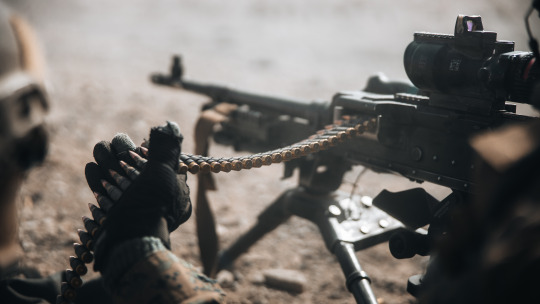
Twentynine Palms // United States Marine Corps
#United States Marine Corps#U.S. Marine Corps#USMC#Twentynine Palms#training#machine gun#GPMG#General Purpose Machine-Gun#M240#M240B#Trijicon#ACOG#3d Littoral Combat Team#3rd MARDIV#MLR-TE
229 notes
·
View notes
Text

Military Armament Corps 9mm M11
#Military Armament Corps#MAC-11#M11#M-11A1#Ingram#machine pistol#submachine gun#firearm#gun#suppressor#weapon#9mm#subcompact#Auto
35 notes
·
View notes
Note
how do you. Come up with weapons :00

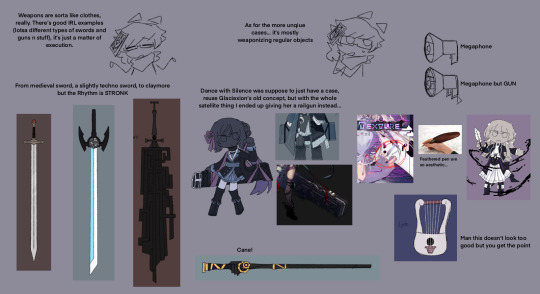
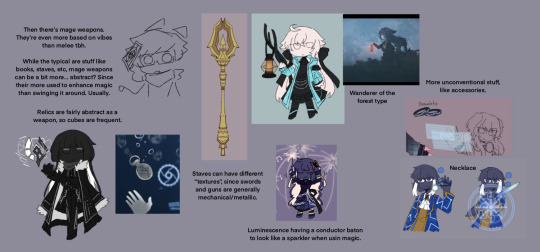
Sorry if this isn’t helpful, the weapons I draw are specific for Rhythms, so my thought process is based around “how do I reference (song) in their design?” Even so, it is difficult for me to come up with weapons myself…
While swords are a good default, sometimes, I want to do somethin a bit different. So the unique weapons are very spur of the moment.
A lot of Rhythms have yet to have weapons bc of this… Like, Distorted Fate is one of my faves, but I had NO idea what to do for a weapon.
#ask#kris.speaks#I have been thinking that maybe each city/Guest Reception area should specialize in a particular weapon#Fragrant Sanctuary mostly using swords & shields#Chronicle Metropolis mostly havin staves/mages#Gyros Corp having machine guns & rocket launchers#etc#but that’s just a worldbuilding thought
9 notes
·
View notes
Text
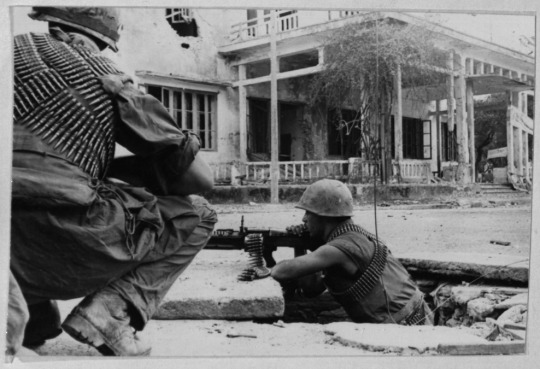

A machine gun team gives advancing troops fire support during the Battle of Huế City, February 2, 1968.
Record Group 127: Records of the U.S. Marine Corps
Series: Black and White Photographs of Marine Corps Activities in Vietnam
File Unit: Divider/Subject - 118 - Combat - Operation Hue City
Image description: A man in a military uniform (sleeveless shirt, possibly just a flak vest) and helmet stands in a large hole in a street. He is resting one hand on a machine gun. He has two ammunition belts crossed over his shoulders. On his helmet is written JANIE. Another man in military uniform crouches with his back to the camera. He has five ammunition belts crossed over his shoulders and back. In the background is a large building with evidence of damage, such as a hole in the wall and a broken vertical support on the porch.
Transcription:
35mm Negative
ID-6-33-38
1stMarDiv
Vietnam
2Feb68 Photog: Sge W.F. Dick[illegible]
Machine gun team with machinegunner Pfc Dominick J. Carango (Phelps, N.Y.) give advancing troops of "H" Co., Second Battalion, Fifth Regiment fire support during street fighting in Hue during the Battle of Hue.
DEFENSE DEPT. PHOTO (MARINE CORPS)
fhm A371335
127 GVB-118
#archivesgov#February 2#1968#1960s#Vietnam#Vietnam War#Huế City#military#U.S. Marine Corps#USMC#machine gun
21 notes
·
View notes
Text

From the notes of Capt. Alfred Jones:
"Davie was a bus and the 'Flying Fortress' moniker seemed to pass her by, but it was a ship with a brave crew. The trudge of getting back to England from enemy territory is a story for another day. I miss her and sometimes I miss the boys we lost that day."
-✪- -✪- -✪-
B-17F "Dear Davie":
*U.S. Army Model B-17F-65-BO
Air Corps Serial No. 42-29670
Delivered Cheyenne 31/1/43; Pueblo 18/2/43; Salina 15/2/43; Brookley 19/3/43; Smoky Hill 23/3/43; Dow Field 18/4/43.
Assigned to the 333rd Bomb Squadron/94th Bomb Group [TS-L] "DEAR DAVIE" 22/4/43; Missing in Action near Hamburg 25/7/43 with Alfred "Comet" Jones, **Co-Pilot: Daryl "Speed" Reed, Navigator: Richard Reed, Bombardier: Charlie Marstaller; Radio Operator: Johnathan Graves, Flight Engineer/Top Turret Gunner: Clyde "Pepsi" Ray, Ball Turret Gunner: William Ortlieb, Waist Gunner: Leslie Lipsey, Waist Gunner: Paul Rapoport, Tail Gunner: Thomas Pugh (6 Killed in Action); "DEAR DAVIE" lost to flak/anti-aircraft fire, crashing near Uetersen, 15 miles NW of Hamburg, Germany.
-✪- -✪- -✪-
[nerd things & acknowledgements below cut]
Notes on the B-17F...
The B-17F was an upgrade of the previous E model, with several notable changes: A one- or two-piece plexiglas nose cone, as opposed to the ten-paneled cone of previous versions. Reinforced landing gear allowed for a greater maximum payload, from 4,200 lb (1,900 kg) of ordnance to 8,000 lb (3,600 kg). Flight and combat range of the F model was improved by 900 mi (1,400 km) with the addition of nine self-sealing rubber fuel cells in the wing root, aka, "Tokyo tanks". The F model was generally characterized by being tail-heavy - which lead to part failure - and woefully undefended from the front; the early F models had no front-facing armament, leaving a 60° blind spot to the direct front of the aircraft - a flaw which was exploited by German pilots, who held air superiority. Later F models would see a list of possible available modifications (factory and field) such as inserting two .50 caliber machine guns into the nose cone to solve the blind spot. Other modifications to later F models were bulged cheek turrets, as opposed to the window-mounted guns of earlier iterations, and the available addition of the iconic "Bendix" chin turret. The chin turret is far more common on the subsequent G "gunship" variant. ("Dear Davie" is an early F model without the nose mount, bulged cheeks, or chin turret.)
*This model production block, serial no., and fate are borrowed from real-life B-17F #42-29670, "Thundermug." "Thundermug" was an aircraft that originally served in the 333rd Bomb Squadron/94th Bomb Group alongside my great-grandfather and his usual steed, "The Gremlins Hotel." It was transferred to the 544th BS/384th BG, at which point it went Missing in Action over Hamburg from flak/aa-fire; 8 of its crew became POWs while 2 were KIA. I have had the honor to speak to descendants of both of its crews and help them research "Thundermug"; I wish to voice a mere glimpse of their stories in a unique way.
**All names of Alfred's crew are either cobbled-together family names throughout our history here or entirely fictitious - though some were inspired by real people whom I grew up with stories of. All inspirations were individuals that lived good lives post-war.
#alpha romeo tango#gremlin's things with wings#alfred f. jones // daring to fly#hetalia#historical hetalia#hetalia headcanons#aph america#hws america#alfred f jones#hey guys crucify me if you must#i'm really proud of this drawing#but i also understand it's pretty nerdy and the headcanon does deal with something a little tragic#but i'm hurling this to tumblr motherless and fatherless for your judgment#this took a few hours haha#love you guys for real#i really love bombers guys sorry for being autistic on main
1K notes
·
View notes
Text
You know, it's funny. Vegeta likes to boast about being Prince of Saiyans but there are only four Saiyans left in existence and they're scattered to different planets. It's kind of like Leia being Princess of Alderaan. It's an important title to him personally but it doesn't really mean anything anymore on a political level.
Bulma, meanwhile, is heir to the largest billion-dollar megacorporation on the planet. Having invented shrinking tech, Capsule Corp now makes everything. The world is filled with Capsule cars and Capsule homes and Capsule guns and Capsule submarines. They've completely reinvented the very nature of what products are.
They have enough money to effortlessly burn resources on private space ventures and build gravity machines into their palatial estate. Even as a child, Bulma was important enough that when a small boy showed up asking to see her, he was given a police escort to her home just to make sure she really did know this kid and everything was on the up and up.
(And when Bulma tells the cop that she cut school, he just meekly responds with, "Oh, you shouldn't but okay." He has no authority here.)
Now they live together in Bulma's giant house surrounded by Bulma's immeasurable wealth and luxury, with their family supported by the family's servant robots.
Basically, the funny thing about Bulma and Vegeta's marriage is that Vegeta is the one who married into royalty.
137 notes
·
View notes
Text

“Machine Gun Corps Memorial”, c.1925 by Francis Derwent Wood. Anglo-American sculptor. A 9ft bronze figure of David presented as a youthful soldier. Picadilly, London.
173 notes
·
View notes
Text
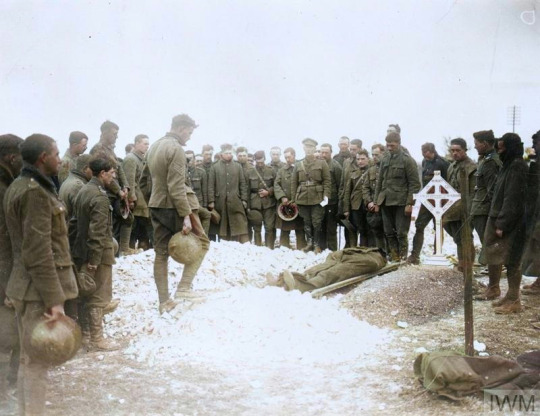
Burial of Major Edward Lewin Knight, commander of the Eaton Motor Machine Gun Battery (Canadian Machine Gun Corps). Major Knight was killed on 26 September 1916.
We are the Dead. Short days ago
We lived, felt dawn, saw sunset glow,
Loved and were loved.
#history#world war one#historical photos#the first world war#world war 1#wwi#the great war#1917#canadian history#1916#edwardian#1910s#edwardian era#world war i#old photos#ww1#world war 1 stories
110 notes
·
View notes
Text
There's a certain class of public intellectual - the two examples I have in mind are Bryan Caplan and Freddie deBoer, who otherwise have very little in common - who is genuinely quite smart and articulate, and able to defend their positions against almost everyone they debate with (including other people smart and articulate enough to be serious public intellectuals), and who therefore come across as being Well Up There in the human tiers. And then, every so often, whether from hubris or just sheer bad luck - they'll go up against someone with Serious Brainpower and they will get absolutely fucking smashed. Bryan Caplan tried to critique Huemer's book and came out of it looking a lot like the coyote after his own steamroller has squashed him flat; FdB had the very bad luck to post about EA a few hours before the sage Alexander did, which perhaps made his post come to Scott's attention in a way it otherwise wouldn't, and a day later there was a SlateStarCodex post that took FdB's position apart entirely, thoroughly, and without visible effort.
It's like watching, say, the Romanians in WWII going up against late-war Russians: These armies are visibly roughly the same thing, they both have tanks and machine guns and a reasonably up-to-date officer corps, it's not like bolt-action rifles against spears and shields. (That would be a normie trying to argue with the likes of Caplan.) And nonetheless one of these armies is about to cease to exist as a serious military organisation.
And nonetheless both bloggers are multiple tiers removed from the average human! I will give Caplan the win against everyone he's ever debated except Huemer and Alexander; and of course most of those people are still people literate enough to actually come to his attention, far beyond any possible effort of a normie Reddit poster; and even Reddit posters (in politics discussions, that is) are (generally) at least capable of reading a few hundred words and posting some moderately grammatical sentences in tangentially-relevant response, putting them easily in the top 50% of humans.
I get kind of used to reading Scott Alexander (quite aside from anything else, he just posts a lot!) and that makes it easy to forget just how much of a mutant superman he really is. And then you watch fairly heavyweight writers like FdB get casually flattened, and you go "Oh, right... born under a red sun."
#this is a scott alexander fan blog#the craft and the community#the sage alexander#the rightful caliph
100 notes
·
View notes
Text

7th Cavalry Brigade Machine Gun Squadron, Machine Gun Corps, moving towards Hesdin to take part in Cavalry Manoeuvres, near Humieres, 16th September 1918.
0 notes
Photo
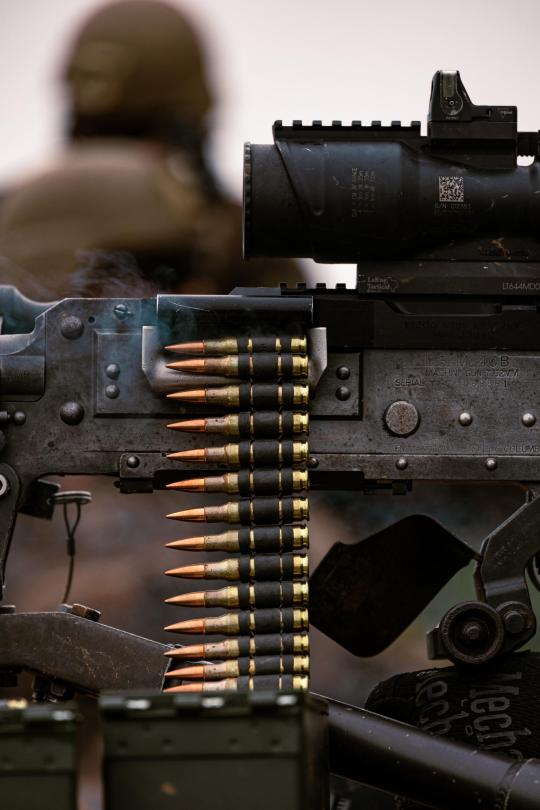
Camp Schwab // United States Marine Corps
#United States Marine Corps#U.S. Marine Corps#USMC#31st Marine Expeditionary Unit#31st MEU#M240#M240B#machine gun#GPMG#general purpose machine-gun#Camp Schwab#Okinawa#Japan#Battalion Landing team 2/5#infantry#gunblr#milblr#military#armed forces#training#Lance Cpl. Cesar Alarcon
97 notes
·
View notes
Text
75 notes
·
View notes
Text

A U.S. Marine machine gun team with Golf Company, 2nd Battalion, 2nd Marine Regiment, participate in a live-fire exercise during Integrated Training Exercise (ITX) 3-23 at Marine Corps Air Ground Combat Center, Twentynine Palms, California, April 12, 2023.
(Photo by Lance Cpl. Justin J. Marty)
#usmc#us marines#infantry#grunts#machine gunner#training#twentynine palms#live fire#military#warrior wednesday
90 notes
·
View notes
Photo

On this day, 28 January 1942, Australian troops armed with machine guns, rifles and bayonets attacked striking Chinese sailors in Fremantle. Around 500 Chinese sailors on six ships had gone on strike and sat down on deck, demanding equal pay with white Australians, as well as better conditions and a guarantee that they would not be sent back to Japanese-occupied China. On January 28, the 5th Garrison Battalion attacked the workers, killing Tong Youn Tong, 44, with a bayonet and shooting Ping Sang Hsu, 22, in the back. One of the workers managed to grab a rifle and shoot back, injuring one of the sailors, before eventually the workers surrendered. The strikers were then arrested, sent to a concentration camp and then most were drafted to the Chinese Labour Corps and used as forced labour for the Allies fighting against Japan in northern China. The Australian press described the workers in stereotypically racist language as being "of a cunning, ruthless type never before seen in Australia". Around the same time, a Chinese crew aboard a Norwegian ship tried to disembark, and Norwegian guards then shot several. Elsewhere, after a Chinese ship fireman complained that an Australian had kicked him in the mouth, the whole crew walked off the ship in sympathy. Chinese sailors' struggles continued and in 1944 a new agreement was reached in which Chinese workers' wages were increased to be 80% of whites'. Pic: Two of the strikers, one of them aged just 12 https://www.facebook.com/workingclasshistory/photos/a.296224173896073/2196406527211152/?type=3
180 notes
·
View notes
Text

alfred rocking some different flight jackets (nerd stuff under cut)
The flight jacket, an iconic piece of any aviator's outerwear. Before they ever became symbols of fashion and the 'exalted' place that came with the occupation of pilot, the flight jacket as we know it was first made for function. Aircraft of World War I and the earliest designs were open cockpit machines, and many would remain that way in the Interbellum. All that to say this paramount paraphernalia's original purpose was to keep an aviator warm in the sky.
Keep in mind that the images above may not reflect every specimen of their type. Jackets differed in design by manufacturer, production block, and even by the military branch (Navy jackets also often have a different name) & unit ordering them. A great example is the wide range of looks for the quintessential B-3. My apologies in advance for them being all American designs. I would love to show off some of the British flight jackets, but I would rather do a little more research (and practice drawing Arthur more)!
A-1 (1927-1931)
A thin leather jacket designed for lower altitudes and made with a flattering fit high on the waist, the A-1 was the kickstart to the wide variety the Army Air Corps would come to know. The A-1 had differing designs between the Navy and the infant Air Corps, and early A-1s are distinguished by having seven buttons and a knit collar, which later models did not keep. However, later models did retain the knit waistband and cuffs.
A-2 (1931-1943)
The direct successor to the A-1, the A-2 quickly replaced its older brother. This is one of the more recognizable jackets from the States after becoming the standard for the Air Corps in the early 1930s. The quality of the jackets would fall due to wartime rationing, with early designs of horsehide and silk becoming goatskin and cotton, however, the general look remained. The A-2 was still primarily for open cockpit designs, lower altitudes, and warmer climes. Identifiable from the A-1 by its snap-down leather collar, zipper, and varying shapes and sizes of a hook-and-eye clasp at the collar to close it.
G-1 (1938-present)
This looker would replace the A-2 in form and function during the 1940s, first becoming popular with the Army and Navy before being adopted by USAAF. Originally named the ANJ-3/AN-J-3 the jacket gained its new designation by the time the Air Corps caught on. The G-1 came with a mouton collar and a bi-swing back to allow for greater arm movement, meanwhile, it lacked the over-zipper 'wind flap' of its predecessors. A keen eye for pop culture might realize that this is the jacket from the 1986 hit Top Gun.
B-3 (1934-1943)
Ah, the B-3! Commonly known simply as the "bomber jacket," the B-3 was made with a high-altitude bomber in mind, unlike previous designs. Incredibly bulky and lined with sheepskin the B-3 was made to keep crews at 25,000 feet above from freezing in their unpressurized cabins, with many such as the early B-17 Flying Fortresses possessing open waist gunner ports. The wide collar could be closed with two leather straps and the jacket did not come with the famous knit waistband or cuffs that others did. "The General" was a B-3 design made specifically for General George S. Patton, who popularized the B-3 outside of the Air Corps. (The B-3 had a slimmer cousin - the B-6 - designed as the 'quality of life' inside bombers improved, such as pressurized cabins.)
B-7 (1941-1942)
Short-lived, the B-7 Parka was manufactured for pilots operating in the brutal cold of Alaska. However, not much is known of it due to its limited production. In fact, the B-7 was discontinued swiftly due to its high manufacturing cost. Either way, the B-7 is a funky one-off that is easily distinguishable from the lineup by its three-quarter length and coyote-lined hood.
B-15 (1944-1954)
The infamous green flight jacket that many today typically know as the "bomber jacket". The B-15 quickly replaced its older brother, the B-10 (1943-1944). Like other designs it had many variations. Similar to the G-1, the B-15 shared the same pocket design and lack of a wind flap, yet the B-15 was cloth with a mouton collar and a knit waistband and cuffs. The shell was produced in a range of materials including nylon and cotton-rayon. It was lighter weight and far less warm than its sheepskin predecessors and spoke to the advancements in aviation technology. A quirk of its design that soon became standard was the designated pen pocket on the upper left arm.
Thank you for coming to my TED Talk.
#hetalia#aph america#hws america#alfred f jones#hetalia headcanons#historical hetalia#alpha romeo tango#gremlin's things with wings#alfred f. jones // daring to fly#back at you guys again with an aviation-flavored infodump#as the owner of an a-2 jacket i must sing its praises for i have taken many a glorious nap within its shell#someday i'm going to be that weird old neighbor with a bunch of weird shit like flight jackets in my closet just for the shits
655 notes
·
View notes